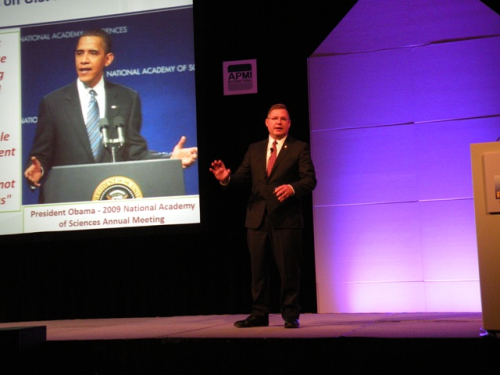
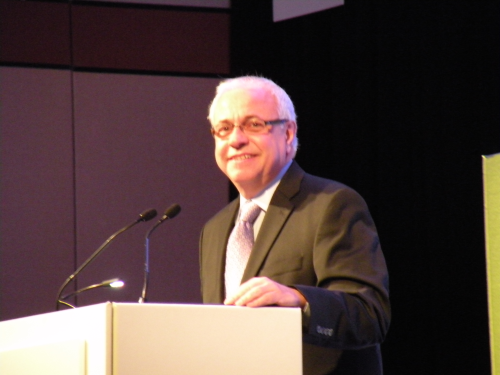
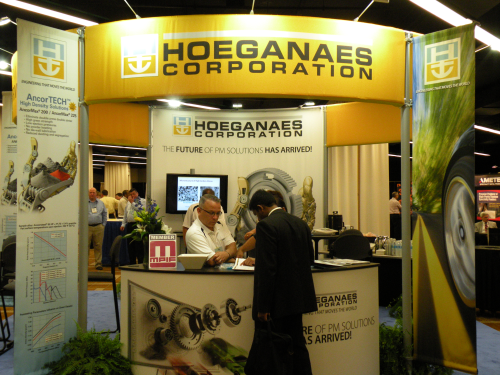
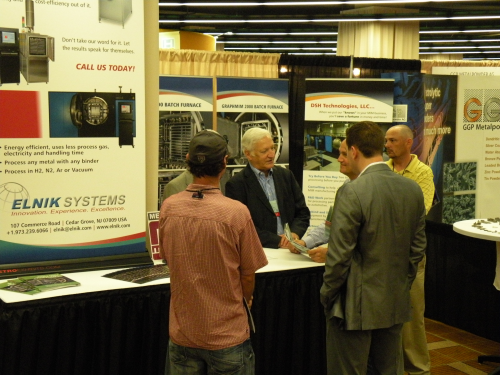
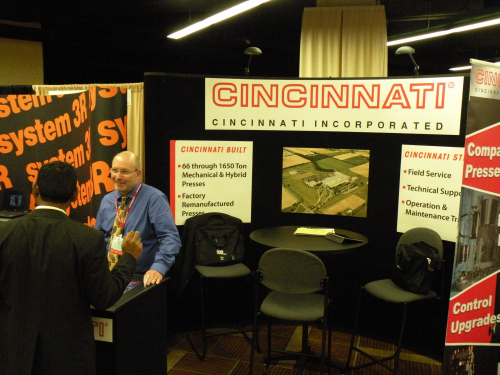
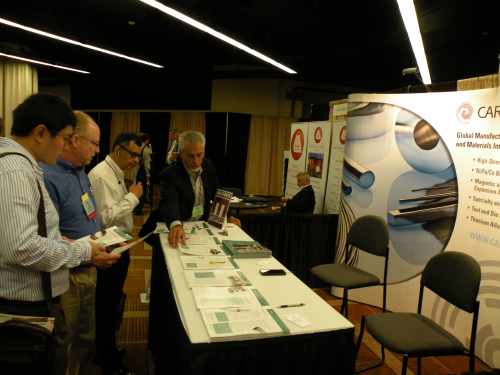
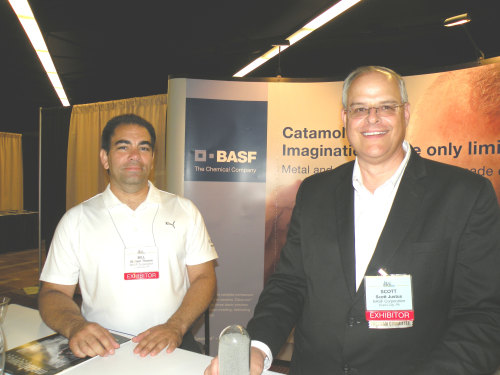
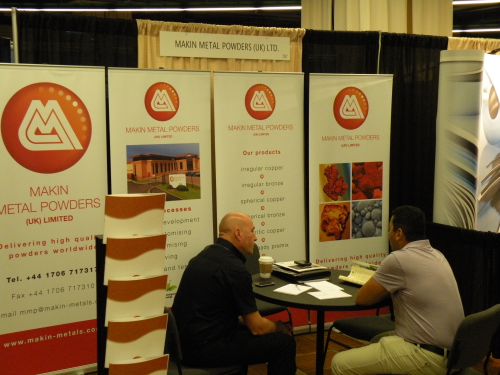
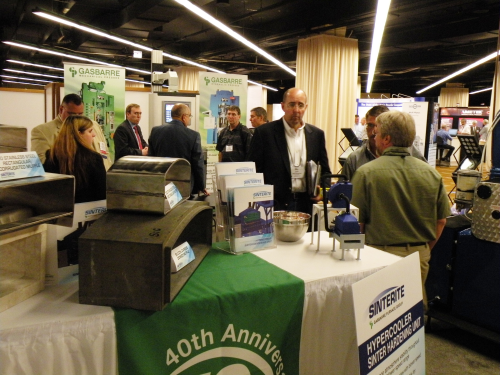
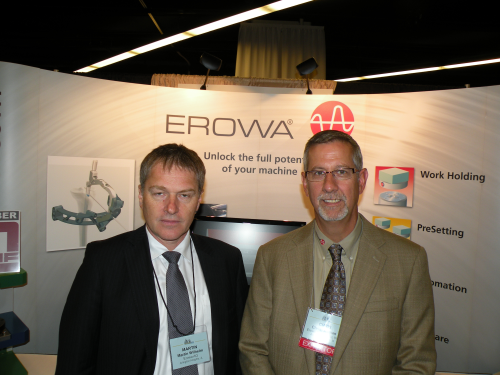
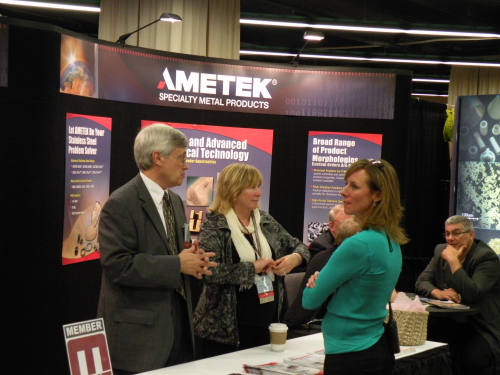
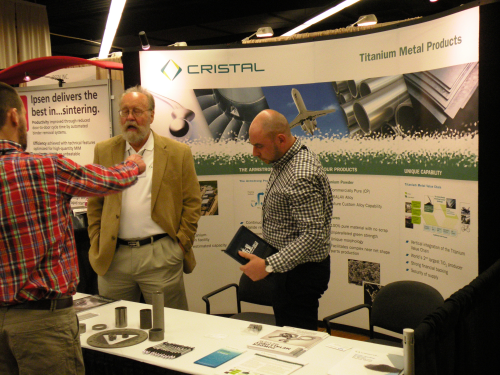
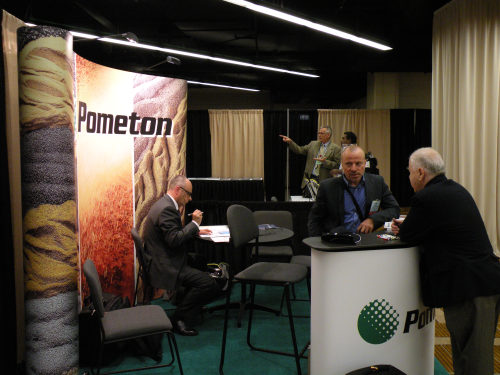
[CHICAGO] The mood here on the first day of PowderMet 2013 was positively upbeat – and it had little to do with the triumphant return of the Chicago Blackhawks, who won the National Hockey League’s coveted Lord Stanley’s Cup the night before in Boston against the Bruins. Rather, the applause generated from the conference halls at the Sheraton Hotel & Towers was in response to encouraging forecasts for the North American powder metallurgy industry. In his opening remarks to the 800-some odd delegates in attendance, Matthew Bulger, president of the Metal Powder Industries Federation, provided a mostly positive assessment in his “State of the PM Industry” overview. Following are some highlights:
The PM industry started the New Year with a sense of confidence after continued growth in 2012. Most metal powder producers, equipment makers, and PM parts companies, especially fabricators of metal injection molded, or MIM, parts, reported increases in sales for 2012.
Total 2012 metal powder shipments increased by 9.6 percent to an estimated 507,643 short tons. Iron powder shipments in 2012 rose 5.5 percent to 383,984 short tons, representing the third consecutive year of steady growth. Likewise, the PM-parts share grew by almost six percent to 343,777 short tons. Non-PM applications, such as welding, cutting, scarfing & lancing, and chemicals, increased 2.3 percent to 40,207 short tons. Shipments of copper/copper-base and tin powders for PM applications actually declined last year by 4.7 percent to 16,209 short tons.
Of the other materials, tungsten and tungsten carbide powders registered minor declines, while stainless steel, molybdenum, and nickel powders experienced modest gains. Recent new information on aluminum powder shows a substantially larger market than previously reported: 80,000 short tons.
According to MPIF statistics, the market for MIM powders grew 35.5 percent in 2012 to 1,971,580 pounds. However, because these statistics do not include all powder makers, observers put the market higher, at approximately 2–3 million pounds.
PM process-equipment makers, especially compacting-press builders, have seen an upward trend by part makers to increase their manufacturing capacity for PM parts. Press sales registered very strong gains last year compared with 2011, and the industry ended 2012 with a backlog of more than $19 million, as reported by the Powder Metallurgy Equipment Association. Observers continue to report a shortage of pressing capacity in the 500-ton-and-above range.
PM parts makers serving the automotive market fared very well last year, while those serving the industrial market and products related to home building experienced more modest growth. MIM companies recorded a solid year of increased sales in 2012. The hot isostatic pressing sector, or HIP market, enjoyed another outstanding year as well, based on casting densification and the processing of MIM parts to full density.
Overall, the North American PM industry fared better than the European PM industry, mainly due to decreases in Western European auto and industrial production; the ongoing financial problems with some Eurozone members certainly did not help their situation. In Japan, metal powder shipments declined slightly, but there was a modest gain in Japanese PM parts output.
“The past few years have been good for the PM industry,” Bulger said. He cited anecdotal information that shows large auto parts suppliers are adding capacity, with light vehicle production expected to top 15 million units this year with even higher growth prospects projected for 2016. With U.S. automobiles averaging 44 lbs. of powder metallurgy parts per vehicle — compared to 19 lbs. per part in parts of Europe — this bodes well for PM suppliers serving the North American market. 2013 early reports According to research conducted by MPIF, iron-powder shipments through the first four months of 2013 have increased 6.7 percent to 136,535 short tons. However, growth through the rest of the year is expected to hover in the three-to-five-percent range. Copper-powder producers are cautiously upbeat, forecasting annualized growth in the three-to-six-percent range. Copper-powder exports are declining.
Equipment makers anticipate increased business levels based on capacity expansions among PM parts fabricators, especially the addition of presses in the 100-to-500-ton range. In addition, new production lines are being added.
Larger multi-plant PM parts makers, especially auto parts suppliers, are adding new capacity to meet growing demand. A trend to more value-added, higher-precision parts and assemblies are aiding bottom lines at many companies, Bulger noted. Automotive suppliers supplying best-selling engine and transmission programs are flourishing. The North American PM market in particular continues to be driven by the trend toward more four- and six-cylinder engines, turbochargers, and six-, seven-, and eight-speed transmissions. The use of variable valve timing systems, or VVT, will continue to grow in order to help OEMs meet 2016 CAFE standards, MPIF projects. It is estimated that the PM parts content in the typical U.S.-made car, can be as high as 1,000 individual parts representing 325 applications.
The MIM industry continues thriving with annual North American sales estimated at $250–$300 million. Sales-growth estimates for 2013 range from 10 to 35 percent. What’s driving the increase? Research shows firearms applications remain the leading MIM parts market, followed by medical/dental, general industrial products, automotive, and electronics.
Regarding the HIP market, the outlook signals another good year that should continue well into the future, MPIF stated. Although casting densification dominates HIP usage, representing about 70 percent of the market, PM applications are also growing for MIM part densification, tool steels, and oil- and gas-exploration projects. Producers of gas-atomized high-alloy steel powders are expanding production capacities to meet expected international demand for HIPed PM components and other applications.
Weakening demand characterizes the tungsten market outlook along with softer raw materials prices. Both the carbide and tungsten-alloy shipments were down during the first quarter, particularly tungsten carbide products in mining and construction industries. Carbides account for approximately 66 percent of tungsten usage. Defense applications are also down, heavily impacted by the sequestration program. However, oil and gas drilling applications are doing well, and aerospace applications are on an upward trend.
Generally speaking, markets for refractory metals are expected to stay flat in the second quarter with a pick-up in business being forecast for the fourth quarter. Tungsten raw-materials prices should begin to rise during this period as well when China begins purchasing more tungsten ore concentrate — an estimated 10,000 tons — for its stockpile as a strategy to increase tungsten prices.
Emphasis on additive manufacturing The second portion of the general session on opening day at PowderMet 2013 focused on the nascent technology known as additive manufacturing, or 3D printing. In his riveting presentation, “U.S. Manufacturing: More Important Now than Ever,” Michael Molnar, Director – Advanced Manufacturing National Program Office, provided solid evidence for the manufacturing “renaissance” currently under way. Molnar, who also serves as the chief manufacturing officer for the National Institute of Standards and Technology, covered relevant subjects ranging from the advent – and application – of 3D printing and the associated impact on the PM industry. He also put considerable focus on the U.S. government’s support of research and development of manufacturing innovations through partnerships spanning both the public and private sectors. “Additive manufacturing is definitely gaining interest,” Molnar stated. Aside from automotive production and the direct impact on PM production, Molnar also cited other growth, high-tech sectors that are leveraging the benefits of PM technology in general and additive manufacturing in particular. These include the medical device industry – i.e., implants and surgical tools – to high-tech parts for military and defence applications. More importantly, Molnar said the Obama Administration is stressing the significance of manufacturing and technological innovation, while backing up this support with funding commitments in the areas of research, development and design. “President Obama is talking about manufacturing, which is the backbone of the economy,” Molnar said. He talked in depth about the President’s US$1 billion proposal for a National Network for Manufacturing Innovation, or NNMI, announced in 2012. Molnar said these public-private partnerships will serve as regional hubs of manufacturing excellence, which in turn will help to make domestic manufacturers more competitive while encouraging investment in the United States. The U.S. government is doing its part, Molnar said, citing US$200 million in funds to be allocated over the next five years in support of these public-private institutes. The key to future growth and strengthening of U.S. manufacturing is precisely this type of cross-sector collaboration between industry, academia, and government. But Molnar warns of the dangers of complacency. “We need to start working now!” he said, driving the point home to attendees. “We can only grow through partnerships.”
For more coverage on PowderMet 2013, look for the July/August edition of Metal Powder Report.



